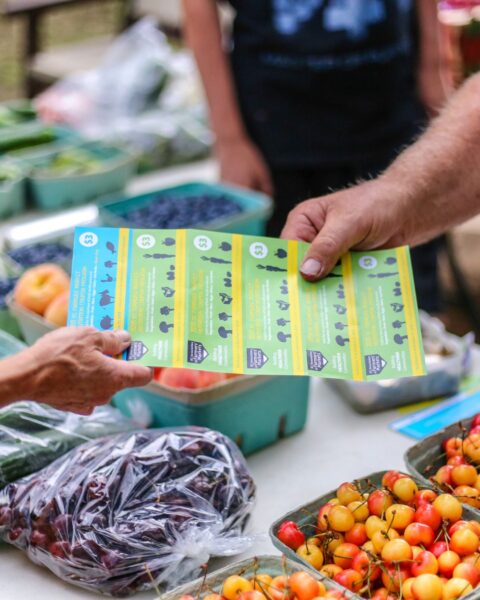Phone: 604-683-2554 | Email: welcome@gordonhouse.org
How My Kids’ School Renewed My Belief in Democracy
This is a special to the GNH Blog by Trish Garner.
Originally posted at The Tyee
Back-to-school week is always intense.
But for my family this year, it was especially intense — and remarkably inspiring.
Our preparations included eight hours of meetings in one day to find solutions to big challenges, and we still came out excited about going back to school. What thrilled me most was being involved in a gritty but inspiring process that reignited my belief in democracy.
Witnessing people from five to 75 negotiate their needs as individuals and as a community gave me hope. It showed me that when people commit to the work of the democratic process, what seems impossible becomes doable. It made me realize that this is the work that we, as B.C. residents, need to do to build a better province together.
My family is new to Windsor House, an alternative, publicly funded school that offers students from kindergarten to Grade 12 a self-described “free, democratic school” or, as we call it, a school where the kids get to choose what they want to learn. Literally.
It’s an educational model that’s hard to organize at the best of times. But last year the school lost its physical site in North Vancouver and this year, it’s using a “multi-campus model” with several smaller venues while it looks for a new home.
One easy way to manage the change might have been to let school staff set up a schedule and slot students into predetermined activities.
That’s not what we did. In the four-hour meeting I attended with my seven-year old twins, they first had to choose what they wanted to do in their first week. After writing down the activities they were interested in, ranging from animals to woodwork, we all worked together to figure out where students would go each day during the week.
It wasn’t easy. We had four available spaces for learning, offering different activities and topics each day.
Each corner of the room represented one of the different locations, and 25 chairs were set up in each one, showing the number of spaces available. The first Monday was to offer sword-building, gaming, swimming or media arts in the four locations.
The kids raced to find a seat in the corner of their choice and when there were more than 25 kids in a corner, they were involved in finding solutions to accommodate everyone. In some situations, kids who gave up their spots had first choice next week, or perhaps got to determine the activities in a different location. Each day there were more activities and more choices.
I was exhausted and overwhelmed. I suspect we all were. But what I saw unfolding was choice that moved beyond the individual in a complex dance of personal desire, social group dynamics (where is my friend going?), practical logistics, community norms and regulations (which, by the way, are also figured out together at Windsor House), and the needs of the community.
Sounds complicated? It was. At the end of that day of meetings, principal Meghan Carrico described this move as “the hardest thing she has ever done in her entire life.” Then she added, “I can’t imagine a better group of people to do this with.”
It’s not that this is a group of people with special skills or attributes. What makes them exceptional is simply their commitment to a process of full democracy. A process that involves asking and answering difficult questions. A process that provides a space where everybody feels heard and respected. A process where challenges are seen as opportunities. A process that is not reduced to voting (as democracy has been in our electoral system) but invests in coming to a shared solution. A process that doesn’t take democracy for granted but recognizes the work of doing democracy, every day. In short, a process that builds a truly democratic community.
The other four hours of meetings that day were two spent getting to know the kids’ new teacher advisor, who spent time learning what they’re interested in, and then two hours in the evening at a parents’ meeting focused primarily on discussing the pedagogy of this model, and then a bit of time for the practical logistics of bus schedules, etc. This meeting was mandatory (and childcare was provided to make that possible), making me realize that the only thing they force at Windsor House is full engagement.
At the end of the last meeting of the long day, Carrico asked: “Are there any more questions?” Everybody was tired and ready to go home — but no one complained when 10 more hands shot up. Sure there was a collective groan, but there was also a shared laugh as we all dug in for the last few minutes of the late evening.
Democracy in action is not easy — in fact, it’s very, very hard — but it is beautiful.
In my work in poverty reduction, I often see people shy away from engaging in democracy, saying that talking about the root causes of poverty is “too political.” So it’s wonderful to see people working hard at democracy. It’s only a small community of 170 families and a dedicated staff, but being part of it is enough to make me believe that this could be done on a larger scale.
We have an opportunity in the lead-up to the provincial election in May 2017 to work hard at democracy at that level. Ask difficult questions. Include everyone. Face the challenges. Invest in shared solutions. Do democracy every day.
Trish Garner is the community organizer of the BC Poverty Reduction Coalition, and has two kids entering Grade 3 at Windsor House and a preschooler looking forward to going next year.



